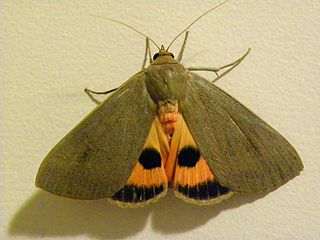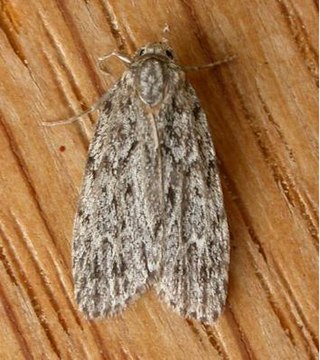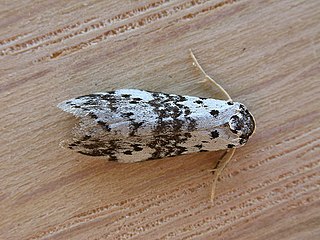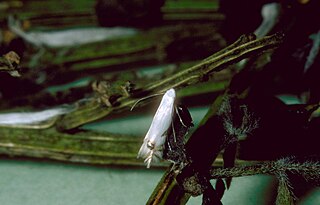
The Pyralini are a tribe of snout moths described by Pierre André Latreille in 1809. They belong to the subfamily Pyralinae, which contains the "typical" snout moths of the Old World and some other regions. The genus list presented here is provisional.

Asura is a genus of moths in the subfamily Arctiinae, and subtribe Nudariina erected by Francis Walker in 1854.

Halone is a genus of moths in the subfamily Arctiinae from southern Asia and Australia. The genus was erected by Francis Walker in 1854.
Hesychopa is a genus of moths in the subfamily Arctiinae. The genus was described by Turner in 1940.
Heterotropa is a monotypic moth genus in the subfamily Arctiinae. Its single species, Heterotropa fastosa, is found in Australia's Northern Territory and Queensland. Both the genus and species were first described by Turner in 1940.
Phenacomorpha is a monotypic moth genus in the subfamily Arctiinae described by Turner in 1940. Its single species, Phenacomorpha bisecta, was first described by Thomas Pennington Lucas in 1891. It is found in Australia.

Philenora is a genus of moths in the subfamily Arctiinae. The genus was erected by Rudolph Rosenstock in 1885.

Scoliacma is a genus of tiger moths in the family Erebidae. The genus was erected by Edward Meyrick in 1886.

Thallarcha is a genus of moths in the subfamily Arctiinae.

The Depressariinae – sometimes spelled "Depressiinae" in error – are a subfamily of moths in the superfamily Gelechioidea. Like their relatives therein, their exact relationships are not yet very well resolved. It has been considered part of family Elachistidae sensu lato or included in an expanded Oecophoridae. In modern classifications they are treated as the distinct gelechioid family Depressariidae.

The Oecophorinae are the nominate subfamily of moths in the concealer moth family (Oecophoridae). They are part of the insufficiently studied superfamily Gelechioidea, and like their relatives, the circumscription of this taxon is disputed.

Leucoptera is a genus of moths in the family Lyonetiidae. Its members are leaf borers many of which can cause severe damage to plant crops, such as coffee or apples.

Xyloryctidae is a family of moths contained within the superfamily Gelechioidea described by Edward Meyrick in 1890. Most genera are found in the Indo-Australian region. While many of these moths are tiny, some members of the family grow to a wingspan of up to 66 mm, making them giants among the micromoths.
Gymnasura prionosticha is a moth of the subfamily Arctiinae. It was described by Alfred Jefferis Turner in 1940. It is found in Australia.
Ameleta is a monotypic moth genus in the subfamily Arctiinae. Its only species, Ameleta panochra, is found in Queensland, Australia. Both the genus and species were first described by Turner in 1940. The habitat consists of wet tropical areas.
Heterallactis microchrysa is a moth of the family Erebidae. It was described by Alfred Jefferis Turner in 1940. It is found in Queensland, Australia.
Lambula pleuroptycha is a moth of the family Erebidae. It was described by Alfred Jefferis Turner in 1940. It is found in Australia, where it has been recorded from the Northern Territory, Queensland and New South Wales.
Threnosia hypopolia, the dull footman, is a moth in the subfamily Arctiinae. It was described by Alfred Jefferis Turner in 1940. It is found in Australia, where it has been recorded from Victoria.

Anacampsinae is a subfamily of moths in the family Gelechiidae.

Stathmopodidae is a family of moths in the moth superfamily Gelechioidea described by Edward Meyrick in 1913.











